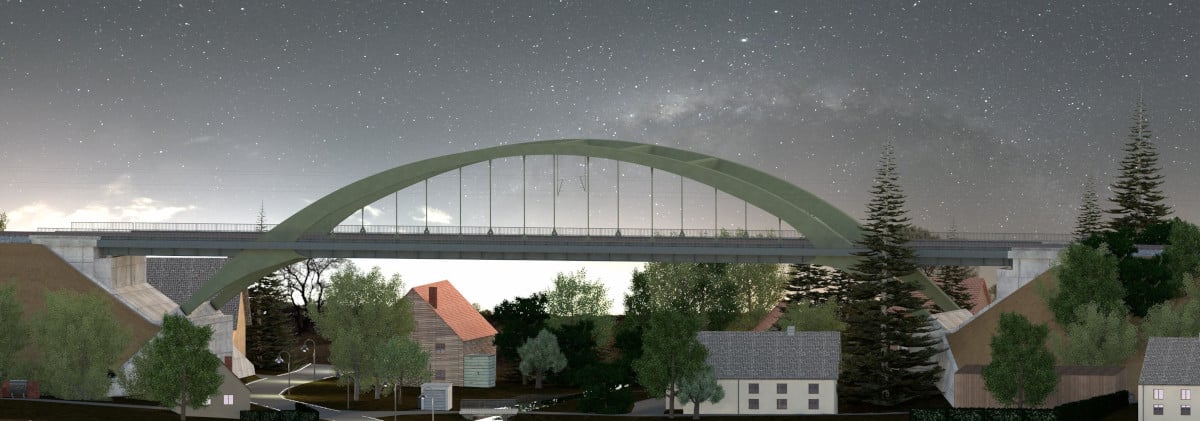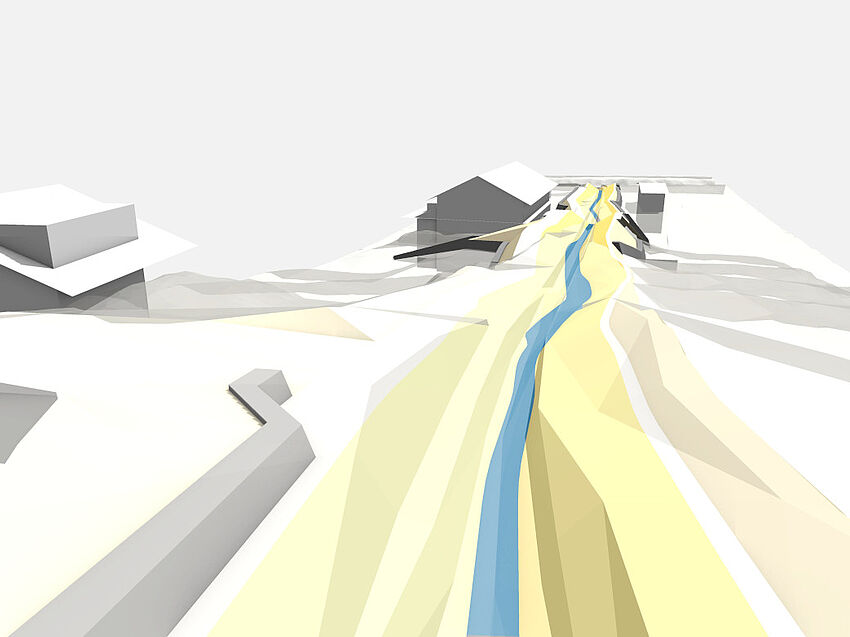Better Precast Girder Bridge Design with ALLPLAN: A Complete Workflow Solution
The replacement of the Ottendorf Viaduct is a magnificent engineering structure, but was without a digital twin. This has now been provided by a junior engineer using ALLPLAN Bridge.
The Ottendorf Viaduct on the Riesa-Chemnitz railway line stood for over 160 years until it could no longer be saved and had to be replaced in 2015. The new replacement structure built at that time was a first for Deutsche Bahn: For the first time in its history, it built a bridge with a frame-stiffened arch structure. Although 3D models were used to some extent in the planning of the structure, the BIM method was not applied, so that no digital twin of the bridge is available for future (maintenance) work. A student at HTW Dresden (University of Applied Sciences Dresden) has now remedied this situation as part of a semester project - in the field of construction informatics - and remodeled the imposing crossing with ALLPLAN Bridge.

First frame-stiffened arched structure for Deutsche Bahn
In order to meet the design and functional requirements, the new replacement for the old arched bridge was designed as a frame-stiffened arched structure - a first for Deutsche Bahn. The total length is 90.95 metres with an arch span of 74.95 metres. The central element is the bar arch with a track suspended on flat steel girders. A special structural feature makes the bridge an exceptional engineering structure: the stiffening girders are penetrated by the arch and form an additional load-bearing frame system with it and together with the downwardly extended arch stems. With the help of a lateral prefabrication of the new bridge structure and a subsequent transverse shift, the bridge could be erected in a core construction time of only four months.

Still largely 2D planning
Dittmann+Ingenieure Bauplanung GmbH & Co. KG and Curbach Bösche Ingenieurpartner from Dresden were responsible for the implementation planning. The engineers still largely relied on 2D planning. 3D models were also created for structural analysis. However, the existing planning material is insufficient for a digital twin that is suitable as a continuous data basis for maintenance work and inspections over the entire life cycle of the structure. However, as BIM-based work is also increasing in existing structures and interest in as-built models of existing infrastructure in particular is growing, Master's student Alexander Peter from HTW Dresden 2020 tackled the bridge in a term paper.

Digital twin with ALLPLAN Bridge
Based on the available 2D and 3D data, the young engineer modeled the structure in ALLPLAN Bridge, creating a digital twin that can now benefit future work on the bridge. This provides important information on all components via intelligent components. At the same time, all (2D) views can be read out from it. One of the greatest advantages is also the groundbreaking automatic derivation of the static model from the geometric model. Thanks to ALLPLAN Bridge, which enables the creation of digital twins, the engineers' work can be made much easier in the future.




